‘The street is not a choice – we want houses’

Once upon a pre-Covid time, President Marcelo Rebelo de Sousa promised that he would personally see to it, that all 400 homeless in the capital got off the street in 2023. Since the new virus hijacked the country’s economy very little has changed. In fact, there are a lot more new faces on the street.

On the 15th of June tens of homeless people gathered before Parliament to express their displeasure. Sara – one of the protesters – has no job and feels discriminated against by the government. ‘I am not a number, I am a person. We have a right to housing!’

Many homeless people, don’t believe in shelters as they lump too many problematic individuals together under one roof.
The best solution would be to discuss with the homeless the needs of each and every one.
‘

‘The government give us a minimum income of 189 euros per month but that is not nearly enough to rent a room.
When the landlords know we are homeless, they ask a six months deposit for a room.
There are a lot of abandoned houses in Lisbon. Why can’t they be used to rehouse the homeless?’
Manuel Grilo – Lisbon’s councillor for Education and Social Rights – declared that since the beginning of the pandemic 500 homeless people have been attended in four emergency centres created by the municipality.

47 of them have been referred to the Housing First program, a project financed by the City Council in which people are integrated into individual housing and supported by professionals. The municipality hopes that by the end of the year a total of 380 people will be accommodated through this program.
According to Guerreiro – another homeless protester in front of Parliament – the councillor of the Left Bloc lives out of reality. ‘Until today, there is not one municipal house attributed to a homeless person!’

In order to judge the evolution of homeless cases ‘on the ground’, the President recently paid a visit to the Avenida AlmiranteReis, Cais do Sodré and Santa Apolonia in Lisbon.
‘It is sad to see that the new crisis means an increase in homelessness, especially among young people. Now saying that the 2023 goal will be met, would be a lie with over 100.000 unemployed in Portugal due to Covid’.
Stay healthy Fique saudável (pic PtRes/Público/JEcon)



















 Portugal’s successful battle against Covid-19 has come under international media spotlight and regarded by many as exemplary. With a quarter of the population of big brother Spain, Portugal has around one-tenth of the number of cases and a three times lower mortality rate.
Portugal’s successful battle against Covid-19 has come under international media spotlight and regarded by many as exemplary. With a quarter of the population of big brother Spain, Portugal has around one-tenth of the number of cases and a three times lower mortality rate.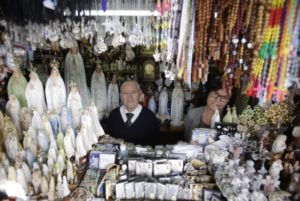 There are a number of different theories for why the virus has caused so much less suffering than in neighbouring Spain.
There are a number of different theories for why the virus has caused so much less suffering than in neighbouring Spain.
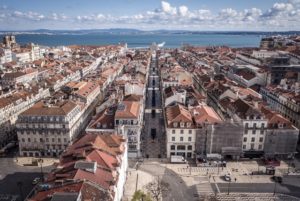 Lisbon’s streets are left to joggers and cats, its glorious beaches cordoned off, the economy asphyxiated, border crossings to Spain sealed, schools and universities
Lisbon’s streets are left to joggers and cats, its glorious beaches cordoned off, the economy asphyxiated, border crossings to Spain sealed, schools and universities  Nevertheless, the government prepares to gradually
Nevertheless, the government prepares to gradually 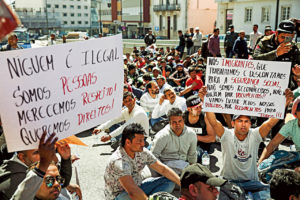 All migrants, including asylum seekers with pending applications at immigration (Serviço de Estrangeiros e Fronteiras), will be treated as permanent residents until at least July 1, granting them full access to the National Health Service, welfare benefits, bank accounts, work, and rental contracts during the corona outbreak.
All migrants, including asylum seekers with pending applications at immigration (Serviço de Estrangeiros e Fronteiras), will be treated as permanent residents until at least July 1, granting them full access to the National Health Service, welfare benefits, bank accounts, work, and rental contracts during the corona outbreak. The
The 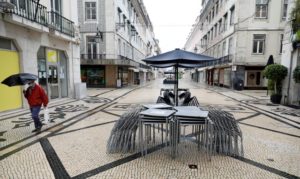 Portugal declared the State of
Portugal declared the State of  Schools in Portugal even closed before any deaths were registered.
Schools in Portugal even closed before any deaths were registered.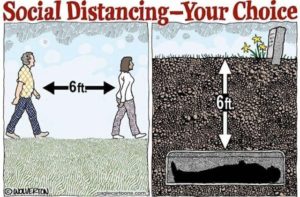 Portugal is doing comparatively well so far. But the authorities’ advice to stay at home and keep distance has to be maintained to prevent further suffering. Researchers at the Imperial College in London suggested that without these measures deaths in Portugal could reach 70,000.
Portugal is doing comparatively well so far. But the authorities’ advice to stay at home and keep distance has to be maintained to prevent further suffering. Researchers at the Imperial College in London suggested that without these measures deaths in Portugal could reach 70,000.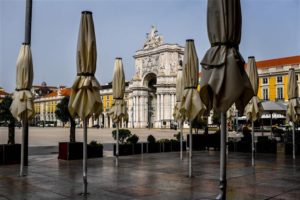 With the peak of the virus predicted in May, it is becoming increasingly clear that quarantine measures in Portugal probably have to stay in force till the end of June.
With the peak of the virus predicted in May, it is becoming increasingly clear that quarantine measures in Portugal probably have to stay in force till the end of June. To finish off with a quote of the famous Dutch footballer Johan Cruijff ‘ every disadvantage has its advantage.’
To finish off with a quote of the famous Dutch footballer Johan Cruijff ‘ every disadvantage has its advantage.’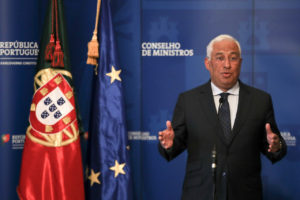 When the number of confirmed coronavirus cases surpassed the 1,000 mark – with six reported deaths – the Portuguese Government announced the State of
When the number of confirmed coronavirus cases surpassed the 1,000 mark – with six reported deaths – the Portuguese Government announced the State of 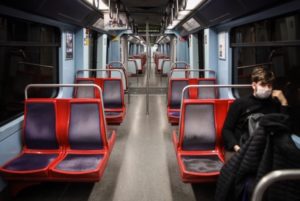 Non-essential business and schools closed. People urged to leave their houses only for food, medicines and walking the dog. Remote working from home became the rule.
Non-essential business and schools closed. People urged to leave their houses only for food, medicines and walking the dog. Remote working from home became the rule. 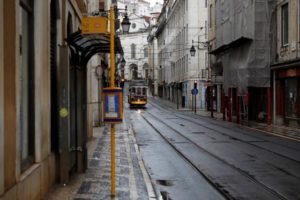 ‘Social distancing’ and ‘protecting the elderly’ have become keywords in the fight against the new virus – Severe Acute Respiratory Syndrome Corona Virus 2 (SARS-CoV-2).
‘Social distancing’ and ‘protecting the elderly’ have become keywords in the fight against the new virus – Severe Acute Respiratory Syndrome Corona Virus 2 (SARS-CoV-2). The intention of prime minister Antonio Costa is not to close the country down – like in France – even though he has the constitutional support with this State of Emergency to do so. The government, however, will – given the developments in Spain and Italy where the death tolls are the worst in Europe – implement further restrictions if necessary.
The intention of prime minister Antonio Costa is not to close the country down – like in France – even though he has the constitutional support with this State of Emergency to do so. The government, however, will – given the developments in Spain and Italy where the death tolls are the worst in Europe – implement further restrictions if necessary. The Socialist Government of Antonio Costa is convinced that upgrading Montijo Air Force Base 6 on the south bank of Lisbon’s Tagus estuary, is the best option.
The Socialist Government of Antonio Costa is convinced that upgrading Montijo Air Force Base 6 on the south bank of Lisbon’s Tagus estuary, is the best option. In addition, the national airline
In addition, the national airline  Moreover, at least 30.000 citizens in the Netherlands have signed a petition objecting to the ‘ecologically disastrous plan.’ It concerns the survival of Netherlands national
Moreover, at least 30.000 citizens in the Netherlands have signed a petition objecting to the ‘ecologically disastrous plan.’ It concerns the survival of Netherlands national  Researchers also say birds are at risk of colliding with aircraft and will be driven away by the noise. The reaction of Secretary of State Alberto Souto de Miranda was stunning ‘people should not worry because birds are not
Researchers also say birds are at risk of colliding with aircraft and will be driven away by the noise. The reaction of Secretary of State Alberto Souto de Miranda was stunning ‘people should not worry because birds are not  The latest obstacle in starting construction on a 1.3 billion euro project are two Communist-led
The latest obstacle in starting construction on a 1.3 billion euro project are two Communist-led  In the last four years over
In the last four years over  Descendants to
Descendants to  Many of the expelled Jews have maintained the Portuguese language (or Ladino, a merger of Castilian and Portuguese), the religious and food rites of Jewish worship in Portugal and preserved family surnames, records, objects kept for generations and documents proving their Portuguese origin.
Many of the expelled Jews have maintained the Portuguese language (or Ladino, a merger of Castilian and Portuguese), the religious and food rites of Jewish worship in Portugal and preserved family surnames, records, objects kept for generations and documents proving their Portuguese origin.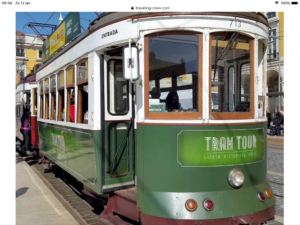 Lisbon is Europe’s Green Capital 2020. A recognition of the work the city has been done over the past years towards a greener and more people-friendly city (
Lisbon is Europe’s Green Capital 2020. A recognition of the work the city has been done over the past years towards a greener and more people-friendly city (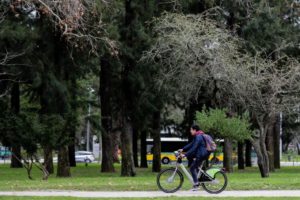 Extension of
Extension of 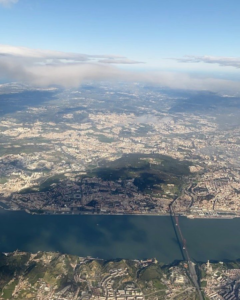 To date, the capital has around 800.000 trees. Lisbon’s biggest – 10 km² sized – Monsanto park, not only generates much-desired shadow but captures CO2 as well. One of the first initiatives of the City Council in January has been the planting of
To date, the capital has around 800.000 trees. Lisbon’s biggest – 10 km² sized – Monsanto park, not only generates much-desired shadow but captures CO2 as well. One of the first initiatives of the City Council in January has been the planting of  Although the sale of electric cars doubled in 2019, compared to the previous year, there are only 1000 public
Although the sale of electric cars doubled in 2019, compared to the previous year, there are only 1000 public 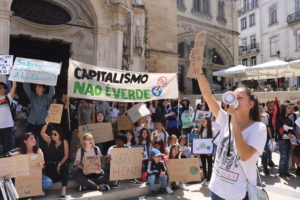 It is difficult to understand why the city is mobilized to be the Green Capital 2020 when major political decisions point into the
It is difficult to understand why the city is mobilized to be the Green Capital 2020 when major political decisions point into the